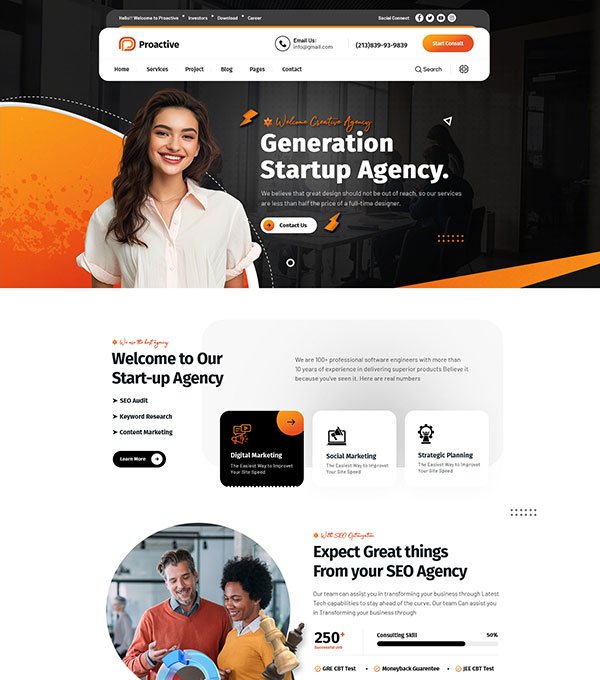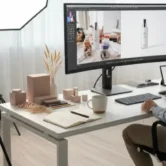
The Ultimate Guide to Design a Website That Attracts Attention
Your website is often the first thing people notice about your business, and first impressions are important. Learning how to design a website that attracts attention can make the difference between a visitor staying or leaving within seconds. Building a website is not just about making it look good, it’s about making it stand out in a crowded online space. Visitors expect a website that is easy to navigate, visually appealing, and clearly communicates what you offer. The right approach combines design, layout, and content to create a smooth, memorable experience. With thoughtful planning and attention to detail, anyone can design a website that draws people in and keeps them engaged.
Designing a website that attracts attention doesn’t require advanced technical skills or a large budget. It requires better decisions in areas like layout, colors, navigation, and performance. Every detail, from image quality to page speed, influences how visitors perceive your business. A well designed website is more than just a digital presence, it builds trust and encourages action. This guide highlights the most important areas to focus on, so your website leaves a strong impression. Following these steps will help you create a site that people notice, enjoy, and remember.
Here’s Some Guide to Design a Website That Attracts Attention
Build a Strong First Impression with Layout
The layout of your website sets the tone for your visitors immediately. A clean and organized structure helps people focus on the most important elements without feeling overwhelmed. Avoid cluttered designs that make visitors search for information, and instead use clear sections, readable text, and adequate spacing. A strong layout also makes it easier for visitors to understand your message quickly, encouraging them to stay longer. Think of your homepage as the front door of your business, it should quickly answer “Who are you?” and “What do you offer?” Simple navigation, clear headers, and well organized content give visitors confidence and make them want to explore further.
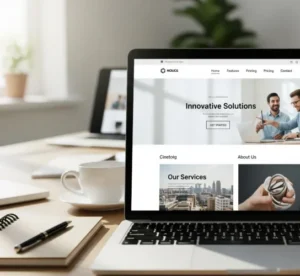 Tips for a strong layout:
Tips for a strong layout:
- Design a website with a clear and balanced structure to make a strong first impression
- Use clear headings and subheadings to organize content
- Keep plenty of space around text and images
- Highlight key information near the top of the page
- Use visual hierarchy to guide attention
Choose Colors and Fonts That Match Your Brand
Colors and fonts communicate your brand’s personality even before visitors read a word. Bold colors can create excitement, while softer tones make a website feel calm and approachable. Fonts also send messages modern, playful, or professional fonts shape visitor perception. It’s important to balance style with readability, as visitors won’t stay if the content is hard to read. Use simple fonts for body text and save creative fonts for headings. Keeping your color palette and typography consistent helps make your brand recognizable and visually appealing. Thoughtful font and color choices also create emotional connections with your audience and improve overall design quality.
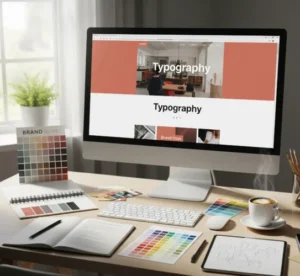 Tips for colors and fonts:
Tips for colors and fonts:
- Choose 2-3 colors that reflect your brand identity
- Use contrasting colors for text and background for better readability
- Stick to 1-2 fonts: one for headings, one for body text
- Match font style to your brand personality
- Avoid distracting colors
- Maintain consistency across all pages
Make Navigation Simple and Clear
Visitors should always know where to go on your website. Clear menus, buttons, and internal links help people move between sections without confusion. A simple menu with a few key options is better than overwhelming users with too many choices. Including a search bar can improve browsing, especially for sites with lots of content. Smooth navigation keeps people engaged and encourages them to explore multiple pages. When visitors can easily find what they need, they are more likely to interact with your offerings. Consistently testing navigation ensures your website remains user friendly and reduces bounce rates.
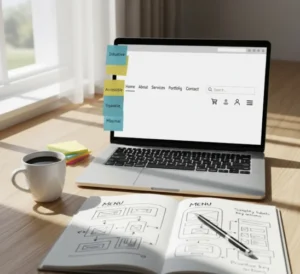
Tips for navigation:
- Keep the main menu short with clear labels
- Include a search bar for larger websites
- Make buttons and links easy to click or tap
- Organize pages logically and consistently
- Highlight current pages to show location
- Avoid nested menus that confuse users
Use High Quality Images and Graphics
Images grab attention quickly and can tell a story or explain a product better than text alone. Low quality or irrelevant images make your site appear unprofessional and can drive visitors away. Use high resolution photos that reflect your brand and add trustworthiness. Graphics and icons help guide users and make content easier to understand. Avoid overcrowding pages with visuals, which can slow down loading speed. Well chosen images support your content and improve the overall website experience. Adding descriptive alt text for images also improves accessibility and search engine optimization.
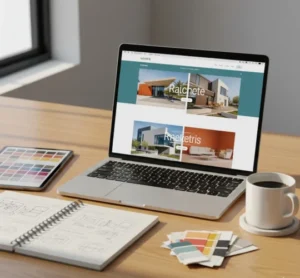 Tips for images and graphics:
Tips for images and graphics:
- Use original photos or professional stock images
- Optimize images to load quickly without losing quality
- Include descriptive alt text for accessibility and SEO
- Use icons to clarify information or highlight features
- Maintain consistent style across images
Focus on Mobile Friendly Design
Most people now browse websites on mobile devices, so your design must adapt to smaller screens. A mobile friendly website adjusts its layout, text, and images to fit any device, ensuring a smooth experience. If visitors have to pinch or zoom to read, they will likely leave. Responsive design also improves search engine rankings. Testing your site on multiple devices ensures that it remains user friendly for everyone. Mobile optimization shows professionalism and care for your audience. Keeping mobile performance in mind from the start prevents redesigns and improves overall user satisfaction.
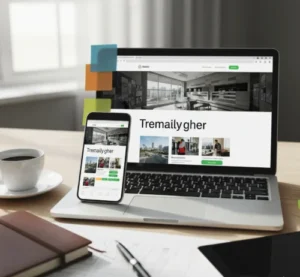
Tips for mobile design:
- Use larger fonts and buttons for easier tapping
- Avoid wide layouts that don’t fit small screens
- Ensure images resize correctly on all devices
- Test pages on phones and tablets regularly
- Simplify navigation for touch screens
- Keep mobile page speed fast
Improve Website Speed and Performance
A slow website frustrates visitors and increases the likelihood of them leaving before engaging. Speed affects both user experience and search rankings, so faster load times are important. Compressing images, reducing unnecessary plugins, and using reliable hosting can significantly improve performance. Smooth site operation, with working links and fast responses, builds trust. Regular maintenance keeps your website fast and reliable. A high performing site encourages visitors to stay longer and return in the future. Monitoring speed and performance metrics ensures your site remains competitive and efficient.
 Tips to improve speed:
Tips to improve speed:
- Compress large images before uploading
- Limit the number of plugins or add ons
- Use a reliable hosting service
- Enable browser caching
- Minimize code and scripts
- Regularly check for broken links
Add Clear Calls to Action
A good website guides visitors to take specific actions. Calls to action (CTAs) such as “Sign Up,” “Learn More,” or “Buy Now” help users know what step to take next. CTAs should be visible, simple, and placed strategically across the site. Without them, visitors may enjoy browsing but leave without engaging further. Use action focused words and contrasting buttons to make CTAs stand out. Repeating CTAs on multiple pages improves visibility and encourages interaction. Well placed and clear CTAs increase conversions and make the website more effective for business goals.

Tips for CTAs:
- Use clear, action focused language
- Place CTAs at key points on the page
- Make buttons visually distinct with colors
- Repeat CTAs in multiple sections for visibility
- Avoid vague or generic text like “Click Here”
- Ensure CTAs link to relevant pages or actions
Conclusion
Design a website that attracts attention is about more than just making it look good, it’s about creating an easy, enjoyable, and reliable experience for visitors. Every part of your site, from layout and colors to images and navigation, affects how people see your business. A well designed website helps visitors understand your services quickly and encourages them to take action. Mobile friendliness, fast loading speed, and security also play an important role in keeping visitors engaged. Calls to action guide users to the next step, while useful content keeps them coming back. Following these simple steps makes it easier to build trust and show professionalism. Remember, anyone can design a website that stands out with careful planning and attention to detail. Start applying these tips today and watch your website attract more visitors and grow your business.
Read Next: 5 Departments to Outsource Besides Customer Service


